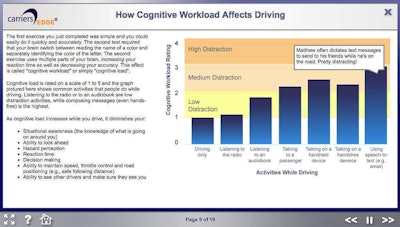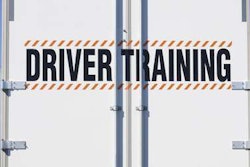
The course combines text, images, interactivity and real-world scenarios to help drivers understand the dangers distractions pose, and gives them practical strategies for minimizing whatever might take their attention away from driving, the company said.
“This is a course fleets and drivers have been asking for, because they know what a growing problem distracted driving is for all motorists,” said Jane Jazrawy, co-founder and chief executive officer of CarriersEdge.
According to the National Highway Traffic Safety Administration, distraction was the cause of roughly 10 percent of motor-vehicle fatalities and between 16 percent and 18 percent of injuries per year between 2010 and 2016.
CarriersEdge has built a library of more than 70 full-length and refresher/remedial courses on safety and regulatory topics in trucking. The courses can be taken any time and any place drivers have access to a computer or mobile device and an internet connection. CarriersEdge also offers a dedicated mobile app for training, and has a system of management tools that allows fleet managers to track training.
“Commercial drivers need to be aware of distractions that affect their own performance behind the wheel, as well as those of drivers around them, in order to stay safe,” Jazrawy said. “But it’s not enough to just remind people to pay attention. We give drivers the techniques they need to keep focused.”
Jazrawy said distractions run the gamut from an insect flying around the cab to emotional stress. “When people are feeling rushed, fatigued or upset, or even merely complacent about the task of driving, they are more likely to be distracted,” she said. “With that distraction, risky behaviors such as failing to stop at intersections, speeding and lane departures can result, leading to near-misses and collisions.”
The course’s interactive features allow drivers to test their own ability to focus on multiple pieces of information during the course, to demonstrate cognitive workload and how it affects reaction time and accuracy. It also covers specific regulations, in the United States and Canada, that cover potential distractions.










